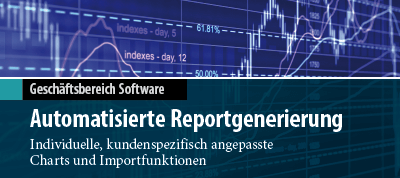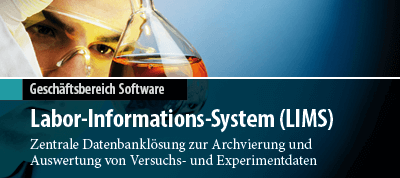Discrete Choice Analysis Tools
Die Discrete Choice Analysis Tools sind ein anpassungsfähiges, effizientes und benutzerfreundliches GAUSS-Modul zur Klassifikation von linearen Daten. Die zur Verfügung stehenden Werkzeuge sind darauf ausgelegt, individuelle Modelle mit anpassbaren Parametergrenzen, linearen und nicht-linearen Nebenbedingungen sowie standardisierten und benutzerdefinierten Startwerten zu spezifizieren. Des Weiteren sind benutzerdefinierte Gradient- und Hesse-Prozeduren möglich. Mit Hilfe von Daten- und Parameter-Eingabeprozeduren ist das Setup der Modelle und die Implementation intuitiv gestaltet.
Die Discrete Choice Analysis Tools eignen sich vor allem für Ökonometriker und Mikro-Ökonomen, Forscher im Bereich der politischen Entscheidung, Analysten für Umfragedaten, Soziologen, Epidemiologen sowie Versicherungs-, Sicherheits- und Unfallanalysten.
Mit Version 2 sind folgende Neuerungen hinzugekommen.
- Noch schnellere und effizientere Handhabung von großen Datensätzen
- Umfangreichere Datenklassifikation
- Publikationsreife Formatierung von Ergebnistabellen mit optionalem Export
- Einfache Dateneingabe, Parameterkontrolle und Schätzung durch neue Implementierung
- Neue Modellierung mit logistischer Regression für umfangreiche Klassifikationen mit L2/L1-regularisierten Klassifikatoren und L2/L1-Loss-Linear SVM mit Kreuzvalidierung und Prognosen
Supported Models
Supported Models: Encompasses a large variety of linear classification models
- Large Scale Data Classification:
Performs large-scale binary linear classification using support vector machines [SVM] or logistic regression [LR] methodology. Available options include cross-validation of model parameters and prediction plotting. Easy to access output includes estimated prediction weights, predicted classifications and cross-validation accuracy. - Adjacent Categories Multinomial Logit Model:
The log-odds of one category versus the next higher category is linear in the cutpoints and explanatory variables. - Binary Logit and Probit Regression Models:
Estimates dichotomous dependent variable with either Normal or extreme value distributions. - Conditional Logit Models:
Includes both variables that are attributes of the responses as well as, optionally, exogenous variables that are properties of cases. - Multinomial Logit Model:
Qualitative responses are each modeled with a separate set of regression coefficients. - Negative Binomial Regression Model (left or right truncated, left or right censored, or zero-inflated):
Estimates model with negative binomial distributed dependent variable. This includes censored models - the dependent variable is not observed but independent variables are available - and truncated models where not even the independent variables are observed. Also, a zero-inflated negative binomial model can be estimated where the probability of the zero category is a mixture of a negative binomial consistent probability and an excess probability. The mixture coefficient can be a function of independent variables. - Nested Logit Regression Model:
Derived from the assumption that residuals have a generalized extreme value distribution and allows for a general pattern of dependence among the responses thus avoiding the IIA problem, i.e., the "independence of irrelevant alternatives." - Ordered Logit and Probit Regression Models:
Estimates model with an ordered qualitative dependent variable with Normal or extreme value distributions. - Possion Regression Model (left or right truncated, left or right censored, or zero-inflated):
Estimates model with Poisson distributed dependent variable. This includes censored models - the dependent variable is not observed but independent variables are available - and truncated models where not even the independent variables are observed. Also, a zero-inflated Poisson model can be estimated where the probability of the zero category is a mixture of a Poisson consistent probability and an excess probability. The mixture coefficient can be a function of independent variables. - Stereotype Multinomial Logit Model:
The coefficients of the regression in each category are linear functions of a reference regression.
Outputs & Reports
Outputs: Einfach zuzugreifen, zu speichern und zu exportieren
- Parameterschätzer
- Varianz-Kovarianz-Matrix der Koeffizientenschätzer und marginalen Effekte
- Prozentuale Anteile ahbängiger Variablen nach Kategorie (wo anwendbar)
- Vollständige Datenbeschreibung aller unabhängigen Variablen
- Marginale Effekte der unabhängigen Variablen (nach Kategorie der abhängigen Variablen, wenn dies anwendbar ist)
- Prognostizierte Zählungen und Residuen
Reporting: Durchführung und Reporting einer Reihe von Goodness-of-Fit-Tests, einschließlich für die Modell-Performance-Analyse
- Full-Model- und Restricted-Model-Log-Likelihoods
- Chi-Quadrat-Statistik
- Agrestis G-Quadrat Statistik
- Likelihood-Ratio-Statistiken und begleitende Wahrscheinlichkeitswerte
- McFaddens Pseudo R-Quadrat
- McKelvey und Zovcinas Pseudo R-Quadrat
- Cragg und Uhlers Normed Likelihood Ratios
- Count R-Quadrat - Korrigiertes Count R-Quadrat
- Akaike und Bayesian Informationskriterien
Systemvoraussetzungen
Systemvoraussetzungen
Betriebssysteme
- Windows
- MacOS
- Linux
Weitere Voraussetzungen
- GAUSS/GAUSS Engine/GAUSS Light ab Version 14
siehe Systemvoraussetzungen von GAUSS














